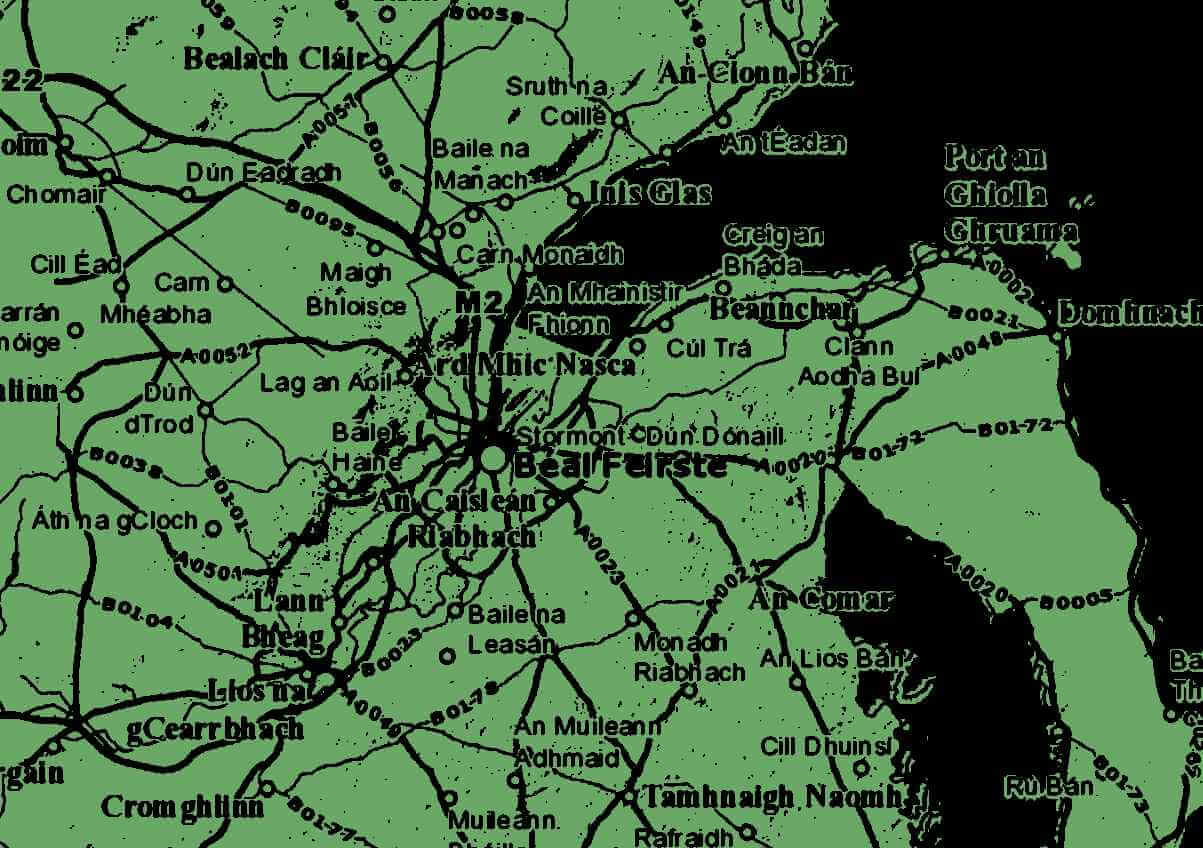An litir dhearg
Stay up to date! Receive a newsletter from us to keep up with the campaigns.

Place-names are deeply connected with our daily life here, given that everyone has different connections with different places, and given that place-names are a part of our day-to-day conversations.
Alongside our towns, many people refer to the name of their own townland, particularly when they are asked where they live. That said, however, people are at times surprised when they learn of the unique place-names tradition in Ireland.
The first reference to place-names may be in Ptolemy’s Geography (150AD), and following this, place-names are seen in both Irish and Latin from the sixth century onwards. Therefore, why don’t we all have that natural awareness of the history of place-names here, and their importance?
The original forms of place-names were changed to suit the English language, and as a result some of our place-names were translated, or given a new name in English, but most were anglicised according to English orthography. Therefore, today, it is these English language place-names that are seen on our street signs, heard amongst the people and it is because of this that many of us are not fully aware of the rich place-names tradition in Ireland.
The place-name Léim an Mhadaidh tells us of a compelling legend, when the dog of the Ó Catháin Chieftain jumped over a deep gorge in the River Roe, to deliver a message of danger to the Ó Catháin Castle.
It is thought that around 95% of our place-names derive from the Irish language, and researchers have a complex task in working out the original forms of our place-names. Much of this research is available on placenamesni.org, and when one sees the original form of these place-names explained, their historical meaning visualises aspects of our landscape, ancient buildings, large structures, and historical heroes of our past, to mention a few.
Particularly as we are coming out of the pandemic, a time when we had the opportunity to appreciate our landscape, it is crucially important that our place-names are discussed in order to fully understand our heritage.
Take the place-name Léim an Mhadaidh (Limavady), for example - this place-names tells us of a compelling legend, when the dog of the Ó Catháin Chieftain jumped over a deep gorge in the River Roe, to deliver a message of danger to the Ó Catháin Castle.
Think of Sean Chill, a place-name in which the original Irish pronunciation can be strongly heard in it’s later anglicised form Shankill. This place-name, which is defined as ‘old church’, describes a medieval church that was likely to have been situated on the site of the present St. Matthew’s Church of Ireland (placenames.ni).
These two examples alone show the history that can be learned from our place-names, and because most of our place-names derive from Irish, it is vitally important that we do our utmost to understand their rich heritage.
Therefore, with this deep knowledge and understanding of the history of our place-names and their unique meanings, place-names can inspire interest in our shared heritage here, encourage reconciliation in our multilingual society today, and progress Irish as a shared language.
Stay up to date! Receive a newsletter from us to keep up with the campaigns.